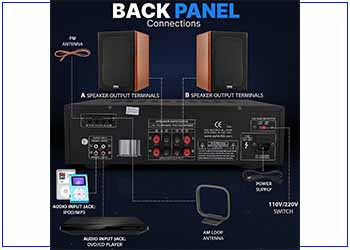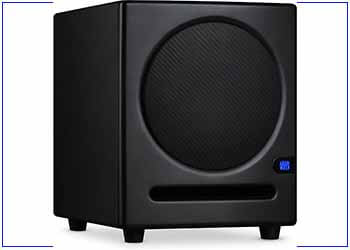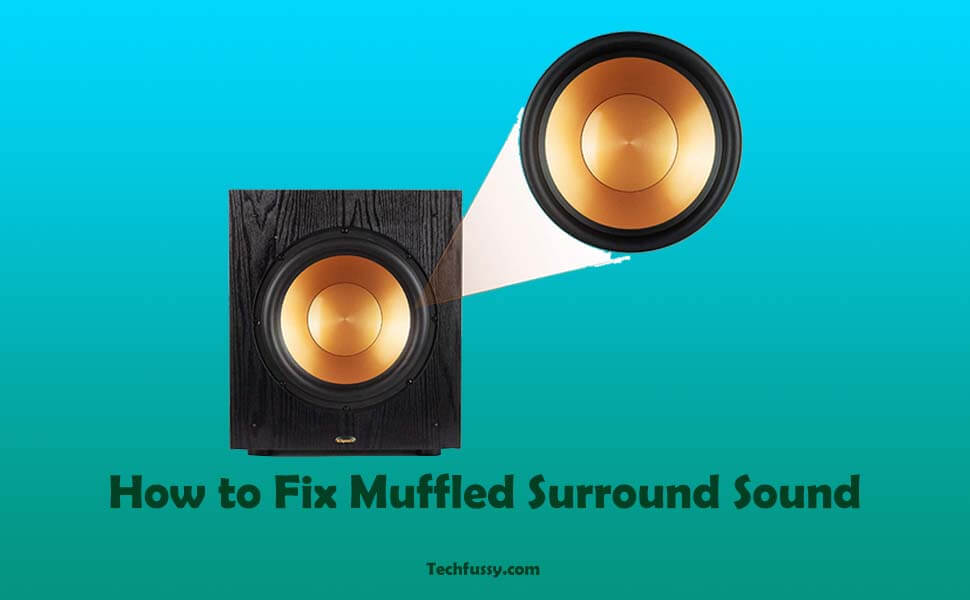If you set up your speakers the right way, you’ll get a lot more bang for your buck! You’ll get much better-sounding surround sound and you’ll also enjoy less ear fatigue from the speakers. That’s why setting up speakers correctly and knowing how to fix muffled surround sound is important and you won’t have to worry about whether or not your speaker has muted surround sound. In this article, you’ll discover how to fix muffled surround sound and why it happens in the first place.
Why Surround Sound Gets Muffled?

What if your surround sound suddenly gets muffled, what would you do? We often face such problems. Well, before finding the solution to why our surround sound gets muffled, we need to know why it happens. So, let’s learn why surround sound gets muffled, and then we will find the solution to how to fix muffled surround sound. So, let’s get started.
This is a common problem many of us face and I wanted to do a bit more research to see what we can do about it. You’re probably experiencing a low volume because of poor wiring, or something blocking the speaker in the home theater system.
If your speakers are producing a muffled sound, check to see if they’re properly grounded. Make sure the wires are in the correct order, or that the wire is damaged.
In addition, if your AV receiver has a speaker test mode, you can usually turn it on in order to make sure your speakers are working correctly.
Surround sound is vastly different than stereo [Amazon Link] sound. The idea is that you hear the sounds from all the speakers in the right way, and exactly the way you would expect them to sound.
You know, music isn’t just for your ears — it’s for your brain and mind too. With just a little more research and care, your speakers will last longer, sound better, and perform better. The audio cable is routed through many components and is then attached to the speakers.
However, poorly designed wiring affects the sound of a recording. When you improve the wiring, you can hear better how all the different parts interact with each other.
In addition, another reason could be the poorly designed audio system. With how it’s connected, the speaker [Amazon Link] cable is the one component that’s most likely to suffer from more than one problem. The speaker itself should be at least as good as the rest of the system, or it will be drowned out.
Moreover, Speaker wire splits are also called power taps, power tap joints, power tap splices, or power tap plugs. Large speaker wire splits are bad news for sound quality. They distort the sounds and make it harder to hear the different instruments. One simple split can already make a noticeable difference in the sound.
The Main Reasons to Get Muffled the Surround Sound

Faulty wiring
If you’re having trouble hearing sounds in one or both speakers, then there could be a problem with the wiring in the speaker.
If you’re having trouble with the audio, try disconnecting one of the speakers, connecting a different speaker cable connector to that speaker output, and then reconnecting it to
If there was a fault in the wiring inside the speaker, then the speaker with the faulty wiring should have stopped producing sound.
If the sound is not working properly, you may have a blown speaker driver. Take your speaker unit to an audio repair shop to diagnose the problem.
Wrong settings on your AV receiver
Your home theatre’s audio visual (AV) settings are the key to a good audio/visual experience.
You need to make sure that your speakers and subwoofer match the quality of the rest of your home theater equipment.
A good place to start would be to try and change the settings on your AV receiver, and see what that difference sounds like.
So, if you have an AV receiver, check that it has the correct volume settings for your system. If you’re new to surround sound, you may want to take a look at the settings. They’re typically easy to find on the box or in the manual.
There are some minor differences in your surround sound settings.
You need to listen to what works best for you. It depends on your type of speakers, what type of home theater system you have, and which of the choices above you like better.
You could try to do this by trial and error, which is one way of doing it.
This might work in theory, but it is unlikely to work in practice. You might not even be able to get the volume and bass you want that way.
Obstructions to sound
To deliver sound to the listeners’ ears in a proper manner, several things need to be taken into consideration. So, if you’re trying to deliver audio into the living room, there are several issues that can cause the sound to be muffled.
If you have a problem with muffled sound, the first thing to check is whether the problem could be caused by something blocking the sound.
For example, most people have no problem hearing the sound of a car horn, as long as there isn’t any obstruction blocking the sound.
So, if you cannot find the obstacle that is causing the obstruction of the sound, it’s time to call a professional to check the state of the sound system in your house.
How to Fix Muffled Surround Sound
Well, when you find your surround sound muffled, you need to check some common things that can possibly cause this problem. We have already sorted out the probable problems of the issue above, now we will mention the solutions. These common techniques can solve your problem. So, before hiring a professional, if you are a DIY enthusiast, you can try these out.
Good Quality Wiring
Why your speakers sound muffled? Are you still having the muffled surround sound? Well, the first thing to do to fix is to use a good quality wire.
Shielded speakers are better than regular ones because they prevent noise from the electrical wiring of the house and surrounding environment from interfering with the audio coming from the speakers.
So if you are using the poor wires for your speakers, it is high time you removed it now or you will have that muffled surround sound that is really disgusting.
When the surround sound distorts or muffles, this is known as an electrical strike, and it’s often caused by the speaker wires running along a power line.
In some instances, this can happen when the wires are parallel to another speaker wire, so it’s best to double-check that all the wires are secure and make a good connection.
However, to test the solution, move the wires around until the noise goes away. If you have to wire up the speaker, you’ll need to make sure that the terminals are wired correctly.
If you don’t find any problems with the wire, you need to focus on the second solution. So, the second solution is …
Fixing Receiver is the Best Solution
If you are asking why my speakers sound muffled or why my speakers sound muffled? Well, the best solution to this problem is to fix the receiver. Since the receiver amplifies the sound, it has a probable solution to fix it.
There could be two kinds of problems from the receiver.
The first one is with its setting. If you are not a professional you may mess up setting your speakers for the first time and it may cause the distorting sound of your speakers. If you are using 5.1 or 7.1 speakers for surround sound, the setup is a bit complicated if you don’t know anything about it. So, if you really mess it up or cannot connect the wires properly in the right way, there must be a greater possibility to make a muffled sound.
The second problem can be caused to its hardware problem. Well, here you may or cannot do anything unless you are an expert in fixing it. You need vast knowledge of hardware and a lot of tools to fix it. So, if the problem goes with the first one, you can fix it easily.
So, fixing your receiver can solve the problem smoothly.
Make Sure the Sounds Are Not Obstructed
Besides those above two, there is another reason that can get muffled the surround sound of your speakers if the sound is obstructed. So, you need to be sure that no thick walls, hollow rooms, or any blocking things obstruct the sound coming. Blocking the frequency of the sounds can muffle surround sound.
Listen out for a hum
Many movies are ruined by the faulty sound quality. If you notice it when listening to a song, you’ll find that it’s just as distracting when watching a film. It’s not fun.
In order to fix a problem with your surround sound system, the first thing to check is the wiring. If that doesn’t work, the power supply, the speaker, or a damaged component is to blame.
Once you’ve identified that something isn’t working, finding the cause of the problem can be very difficult. You’ll need to figure out what exactly is going on.
There are a lot of things that can cause noise. Inbuilt mixing desks, record decks, electric motors, dimmers, transformers, TVs, monitors, and computer sound cards are all common causes of hum.
You can’t always eliminate the source of the noise. However, in some cases, it is easy to get the noise to stop when the source is removed.
Turn off your internet, your email, your phones, your credit cards, etc. It’s very important to make a good start to any new product.
If the sound is still not fixed, it may be a more general household problem, and you’ll need to talk to a professional about it.
I fixed my problem on my computer by turning it off and listening for the humming.
Some Important Tips to Fix Muffled Surround Sound
What causes speakers to sound muffled? If this is still a question, why don’t you read this section for getting some tips so that you can find out the problem and fix it?
You can tell if a home theater is a good one because it has to surround sound. You have a problem if you don’t hear from speakers in the same place at the same time. That’s why inhibiting, detracting, and ruining the fun are three of the many reasons that this is not fun at all, it is really annoying and disgusting.
The problem with a lot of people’s home theaters is that they don’t have a good home theater system in the first place.
Sound quality is very important in every aspect of home entertainment. You need good surround sound to watch television, listen to music, watch movies, play video games, and more.
To get the best possible surround sound from your home entertainment system, try using a different player or even your TV if you still have the surround sound problem. You’ll know right away if there’s a problem.
However, there’s a very simple way to improve the clarity of the sound and correct everything you’ve ever done wrong. If you want the right type of surround sound, you need a great setup that includes the right speakers.
If you’re not convinced that the problem is with your speaker, you might want to try plugging a different player or your television. This will help you decide if the problem is with the speakers, or if it’s something else causing the trouble. Where the problem is coming from, or what’s causing it, depends on what you want to do about it. Make sure the right speaker is active.
Due to the confusion of speakers located at different endpoints, it can be challenging to know which sound channel is coming from which part of the room. This is a problem that can occur when people are in different rooms and speakers are connected with only one cable.
Frequently Asked Questions
1. How do you tell if your speakers are blown?
If the amplifier has a blown speaker, the most common aural indication is an unpleasant buzzing or scratching sound the speaker is attempting to reproduce. The most common aural indicator of a blown speaker is a harsh, scratchy, or metallic buzz or popping sound. It is most noticeable in higher pitches, but it can also be heard at lower pitches. Maybe there’s no sound at all.
2. How long can speakers last?
Most speakers today are built using premium materials and designed to work in a range of environments. They’ll also likely last longer than other speakers, which means you won’t need to replace them so often. In another way to answer this question, the lifespan of a high-quality speaker is about the same as the average life of a car. That means a speaker will outlive their useful life by around 5-10 years.
3. Is it possible to damage speakers by playing them too loud?
Loud playing of music or audio can cause damage to speakers, due to excessive heat being produced by the drivers or the driver suspension failing. However, Speakers do have ratings that indicate maximum output levels and speaker protection. You should not exceed those levels, and if you do, the drivers will be damaged.
4. Do speakers get worse or better with age?
Most speakers can last a while if you take care of them. You’ll need to know what kind of speaker you have and how often you plan to use it. It’s true that over time, speakers can wear down, but there are several things that can extend their life.
One thing you can do is use your speaker on a regular basis.
Speakers such as the surround, cone, capacitor, and Ferrofluid degrade over time. That causes the overall sound quality of the speakers to diminish. When speaker parts degrade over time that reduces the overall sound quality of the speakers.
The best speakers age in ways that make the speaker cones less precise. The result is a loss of control and a reduction in sound quality. The spider (spring) loses tension over time and it throws the cone out of balance.
5. What should I do with old speakers?
You can throw your old speakers if not needed anymore if you want. However, any broken or damaged speakers can be useful if you know the ways. You can convert those old speakers for many purposes.
☞ You can make it into a loud charging station
☞ Can be made an Internet Radio
☞ Turn those speakers into a Boombox
☞ Repurpose grills as earring holders
☞ Those speakers can be used for excellent Bookshelves and Wooden Furniture
6. What can I use instead of a receiver?
There are actually several options instead of a receiver. If your receiver is damaged or broken, you can follow different methods. However, if you are an expert on wireless connections, it won’t be a surprise for you to use other techniques. The methods you can usually use are:
☛ Using Two-Channel Amplifiers
☛ Using a Direct Connection
☛ Using a Hub
7. Do I need an amplifier for my speakers?
The answer is no. Power speakers don’t need an amplifier. Both powered and active speakers are commonly used interchangeably, but there’s a difference between them. In a pair of powered speakers, there is usually only one amplifier that is built into one of the speakers. Read more.
Final Words
Fixing your sound system with Dolby Atmos is a tough job. It requires a certain set of skills to properly install and configure. Or a great way to enjoy the benefits of surround sound without the hassle of fixing it is by purchasing speakers with good quality surround sound technology that works with the rest of your equipment. It’s important to make your home an inviting environment in which you can do your work and enjoy the music that you love. Not only will you be able to work more efficiently while listening to high-quality sound, but you’ll also be able to create a space that is more functional and more welcoming. We hope you have learned how to fix muffled surround sound. This will help you a lot.
Read More Articles:
- Best Speakers for Home Gym
- Active vs Passive Subwoofer
- How to Connect Speakers to TV without Receiver [5 Easy Methods]
- Best 4×6 Speakers
- Best 6×9 Speakers for Cars
- Best 12-inch Subwoofers for Car
- Woofer vs Subwoofer – What Is the Difference?
- Subwoofer Not Working But Amp Has Power – How to Fix It?
- How to Connect a JBL Speaker to a Smartphone
- Best Equalizer Settings for Bass

